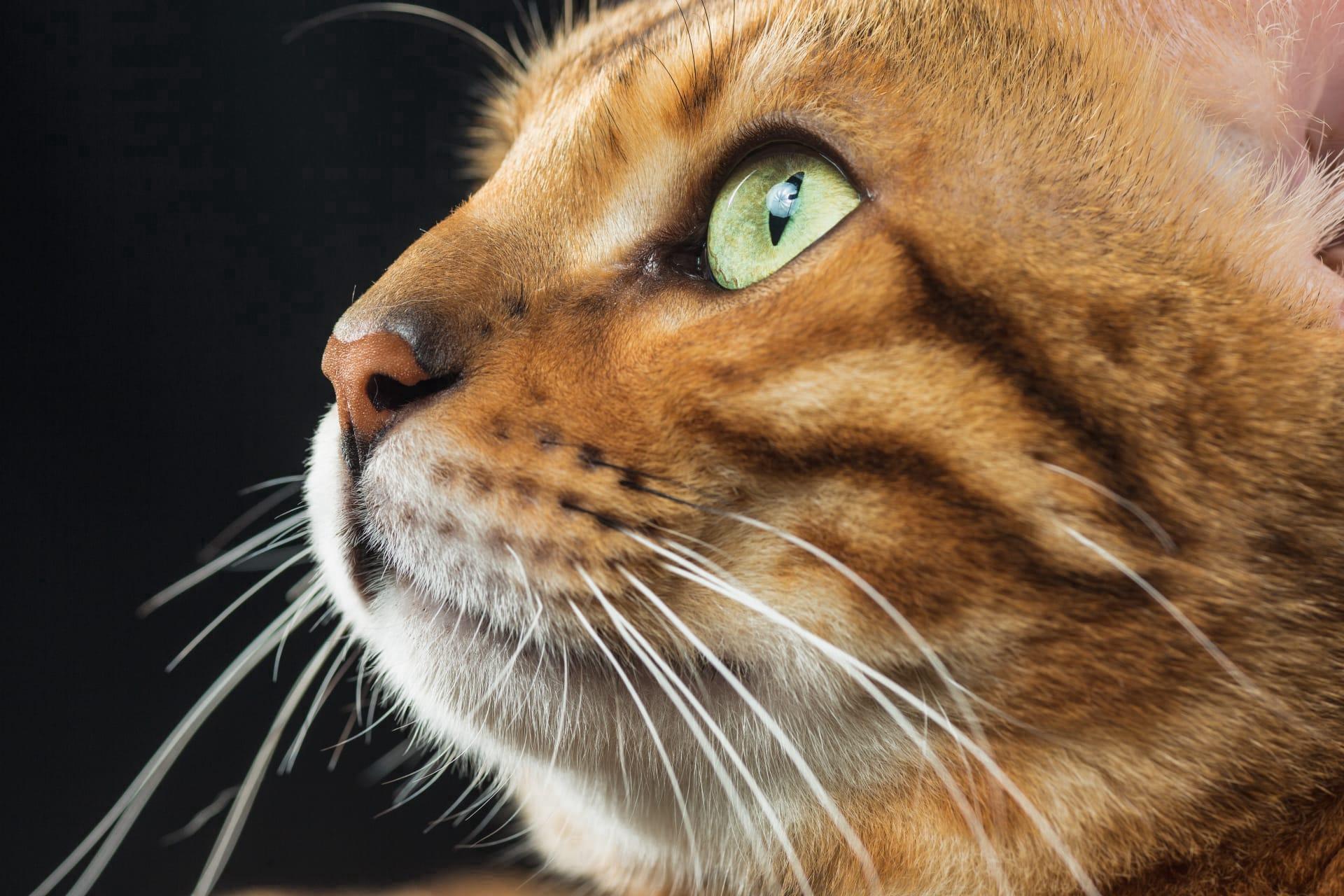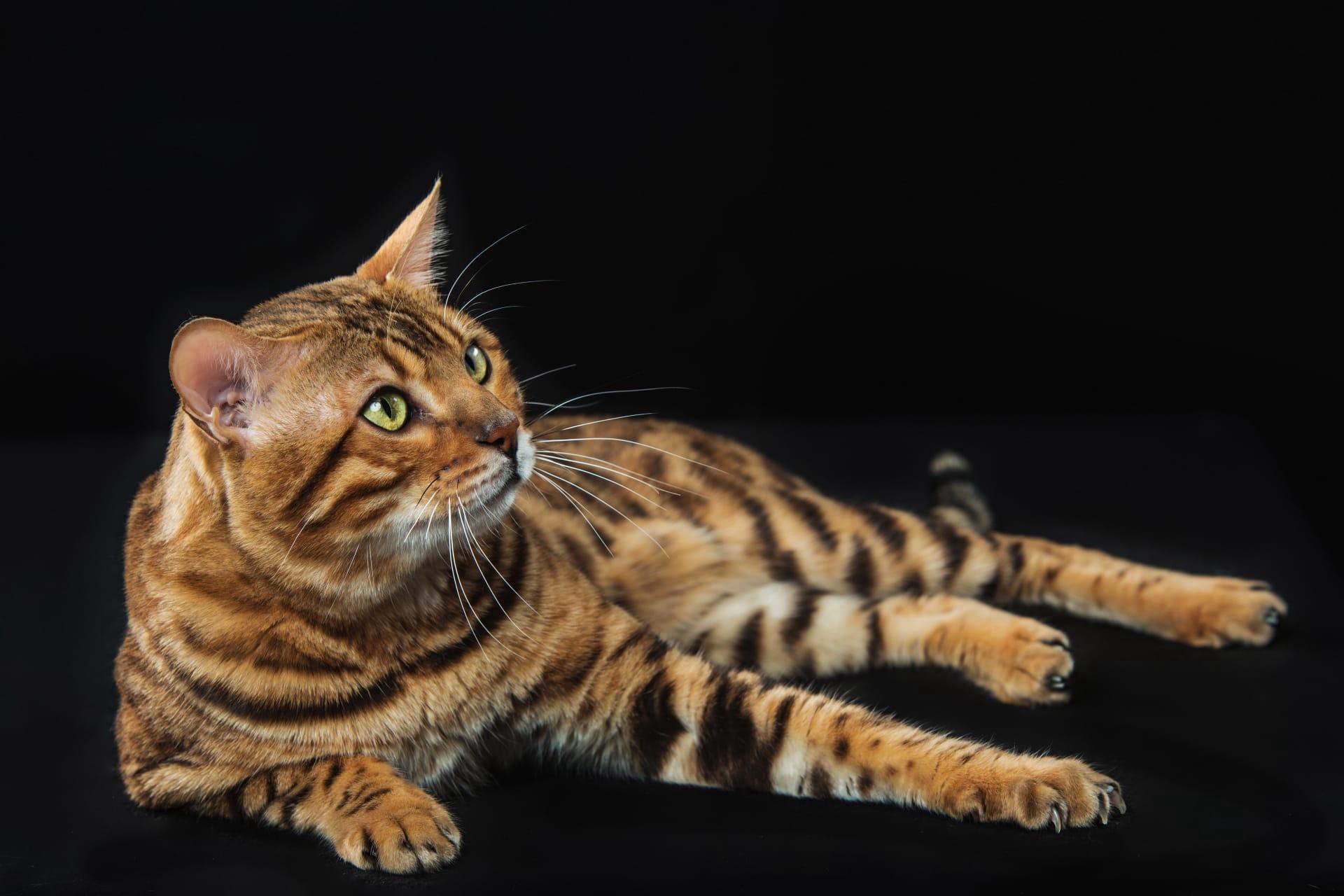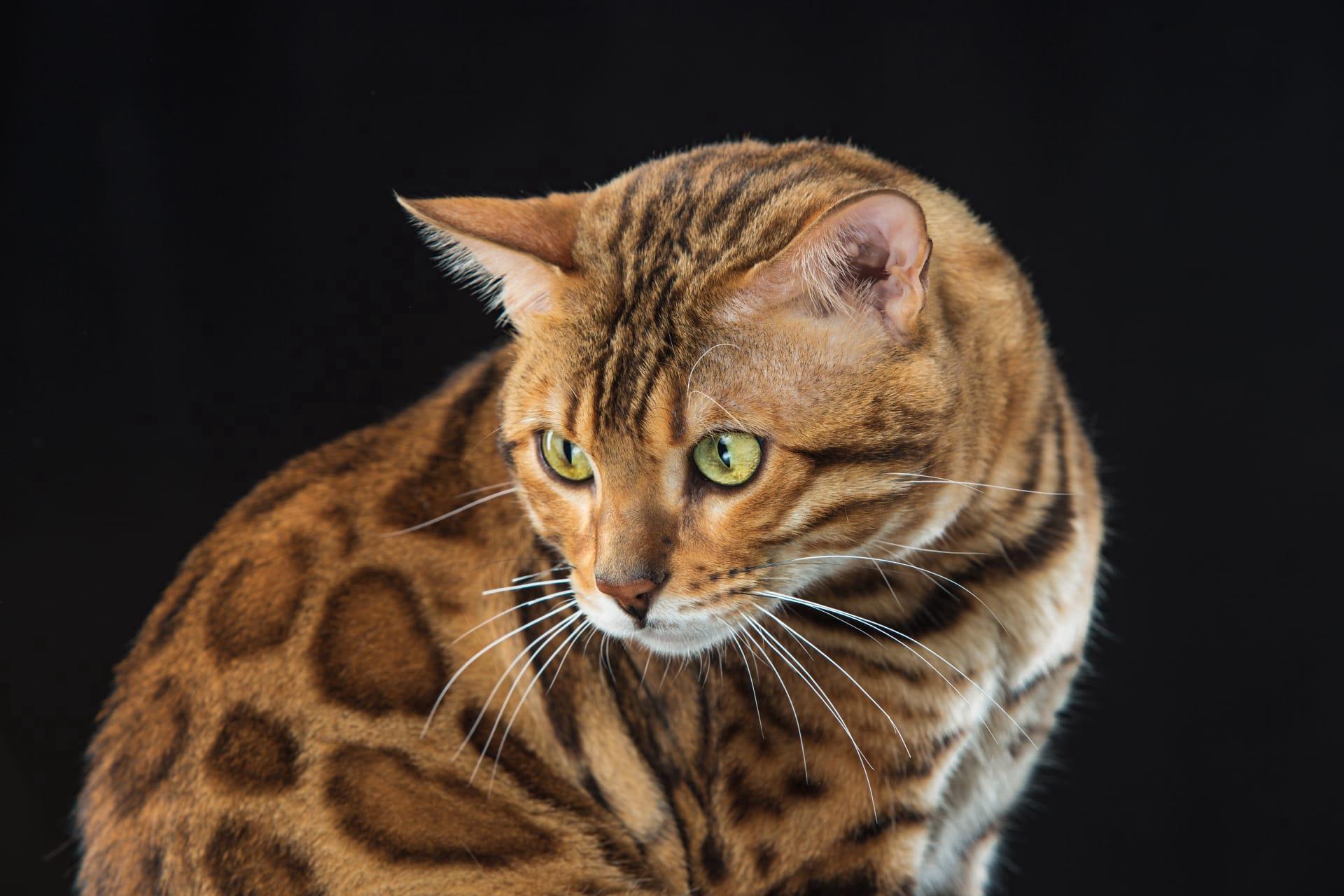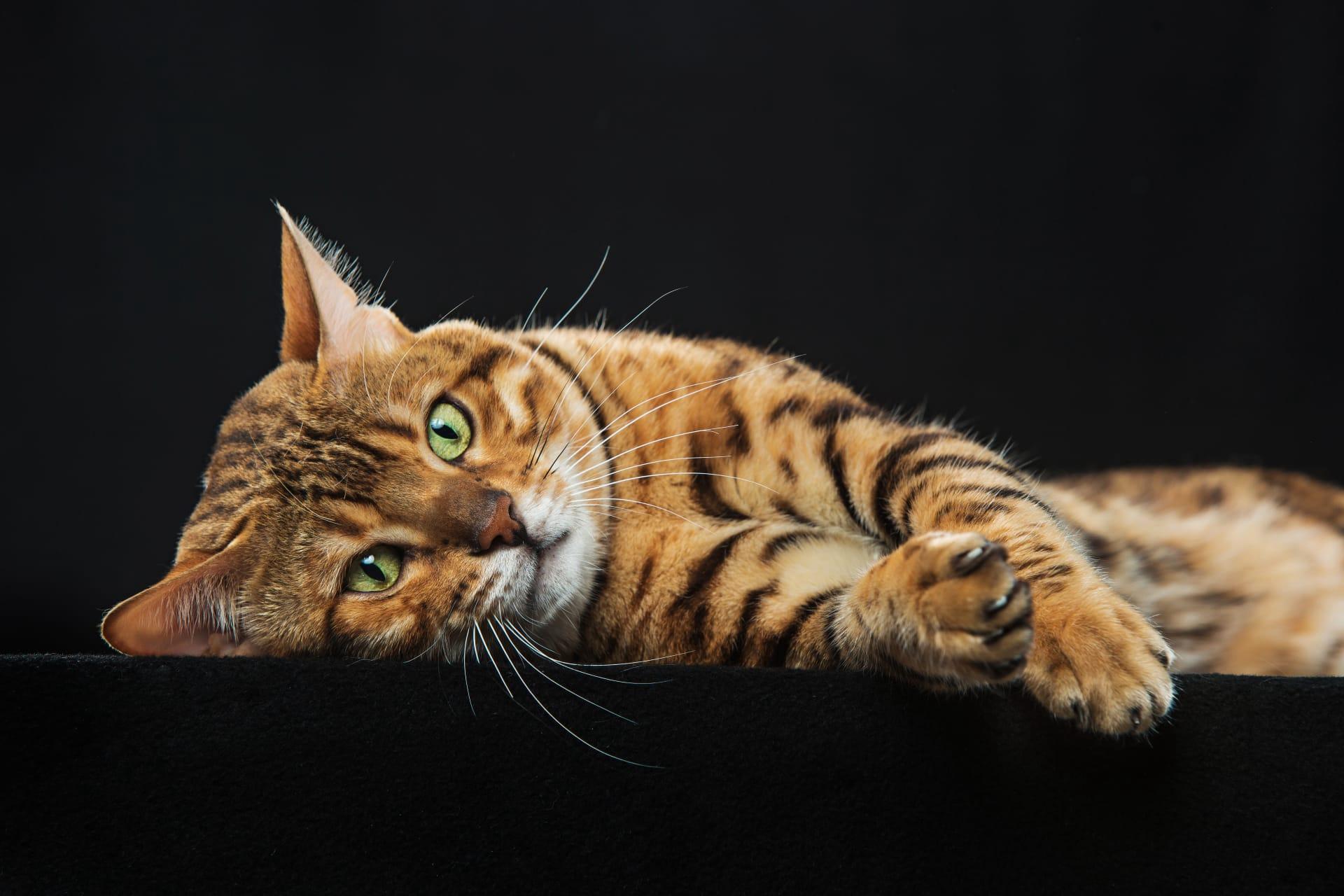1
Bengal cats are renowned for their striking wild appearance, which is primarily due to their origin from a cross between domestic cats and the Asian leopard cat (Prionailurus bengalensis). This distinctive breeding has not only given them a leopard-like coat with vivid markings such as rosettes and spots but also a muscular build. An adult Bengal cat typically weighs between 8 to 15 pounds (approximately 3.6 to 6.8 kilograms), showcasing a robust and agile physique that enhances their predatory and playful behaviors.
Their coat is not just about looks; it's also uniquely soft and short, requiring minimal grooming compared to other breeds. The fur of a Bengal cat contains glittering tips, a feature that makes their coat shimmer in the sunlight as if sprinkled with gold dust. This glitter effect is a genetic trait that adds to their allure, making them one of the most visually stunning cat breeds. Despite their wild appearance, Bengal cats are entirely domestic and possess a friendly and affectionate nature, making them excellent companions.

2
Bengal cats are known for their exceptional intelligence and active nature. They are highly trainable and capable of learning tricks and commands, similar to dogs. Bengals are also fond of interactive toys and puzzles that challenge their intellect, often solving complex tasks to retrieve treats or toys. This intelligence makes them curious and adventurous, always exploring their surroundings and even mastering the art of opening doors or drawers to satisfy their curiosity.
Another remarkable trait of the Bengal cat is their affinity for water, which is uncommon among domestic cats. They often exhibit behaviors such as dipping their paws into water bowls, taking showers with their owners, or even fishing in aquariums and ponds. This love for water traces back to their wild ancestors, which needed to cross bodies of water in search of food. Such an affinity makes Bengals unique, as they might join their human companions for a swim or simply enjoy playing with running water from a tap.

3
Bengal cats have a highly social and communicative nature. They develop strong bonds with their human families and often follow them around the house, participating in daily activities. Bengals communicate their needs and desires through an extensive range of vocalizations, from purrs and chirps to trills and meows, each with different meanings. Their vocal behavior is more pronounced than many other cat breeds, making them quite "talkative" and interactive pets.
Their playful and energetic temperament requires regular mental and physical stimulation. Bengals are renowned for their love of climbing and high places, often found perched atop shelves, refrigerators, or even door frames. They require environments where they can jump, climb, and explore safely. Providing cat trees, shelves, and interactive toys can help keep them entertained and mentally stimulated, reducing potential behavioral issues due to boredom or lack of activity.

4
Despite their domestic status, Bengals carry the wild gene for their distinctive coat patterns, which come in various colors and designs, including brown, silver, and snow. The most coveted is the rosetted pattern, resembling that of a leopard, with each rosette having an outline of a darker color surrounding a lighter center. The intricacy and density of these patterns can vary widely among individuals, making each Bengal cat's coat unique.
Bengals are not only aesthetically pleasing but also contribute to the allergy-friendly category of pets. Although no cat breed is truly hypoallergenic, Bengals produce less Fel d 1, the primary allergen present in cat saliva. This characteristic makes them a better option for individuals with mild to moderate cat allergies. Regular grooming and maintenance of their living environment can further minimize allergen exposure, making Bengals suitable companions for those who love cats but suffer from allergies.

5
The Bengal cat's diet plays a crucial role in their health and vitality. Being descendants of wild ancestors, they thrive on a high-protein diet that mirrors what they would eat in the wild. High-quality cat food that lists real meat as the first ingredient supports their muscular build and energy levels. Some Bengal owners also incorporate raw or partially cooked meats into their diet to cater to their carnivorous nature.
Bengals are also known for their longevity, with a lifespan typically ranging from 12 to 16 years. This longevity is attributed to their robust genetic makeup and active lifestyle, which helps maintain their physical health and mental well-being. Regular veterinary check-ups, a balanced diet, and an active lifestyle are key to ensuring a Bengal cat lives a full and healthy life, providing companionship and joy to their human families for many years.